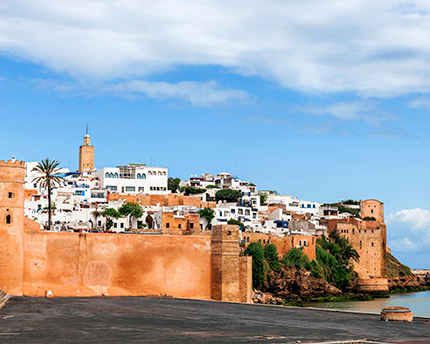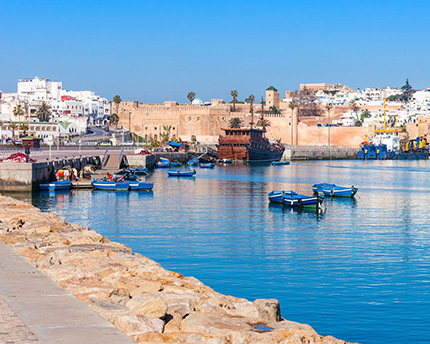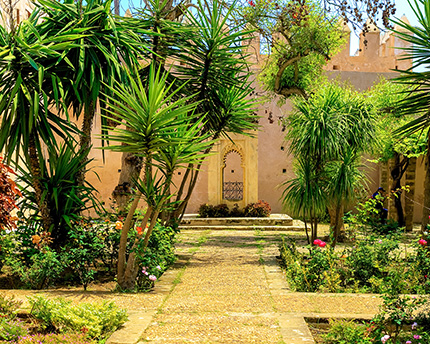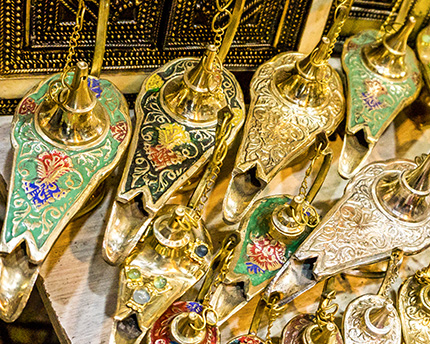The Rabat Medina, like that of the other great imperial cities of Morocco (Meknès, Marrakech and Fez), is the place where the main cultural, spiritual and worldly essences of this great North African country are concentrated.
Surrounded by towering walls, it is lined with streets, passageways, small squares and alleyways with modestly fronted houses. Make no mistake: sometimes, behind their bland appearance, the façades hide true mansions that extend into the interior of the Medina, with their courtyards and various pavilions.
On the other hand, many of the city’s best craftsmen live in the Rabat Medina. With their skilful hands, those professionals create, repair and maintain the objects, mechanisms and tools that make the inhabitants’ daily life more comfortable.
History of the Rabat Medina
The Rabat Medina was built to provide safety to the thousands of Moors who arrived from the Iberian Peninsula at the beginning of the 17th century. This occurred after the final expulsion decreed by Philip III of Spain. Most of them arrived precisely in Rabat, a city that had experienced a significant decline since the 13th century.
It was the Andalusians who completed the high wall that surrounds the neighbourhood, extending the pre-existing Almohad defensive construction with a new wall known as the ‘Andalusian wall’.
For centuries it was the descendants of the Hispanic Moors who were the main inhabitants of the Rabat Medina and who eventually turned it into one of the best-protected walled enclosures in Morocco. Interestingly, they were also responsible for the proclamation of Rabat as a republic independent from the rest of the country, a status that was maintained between 1627 and 1668.
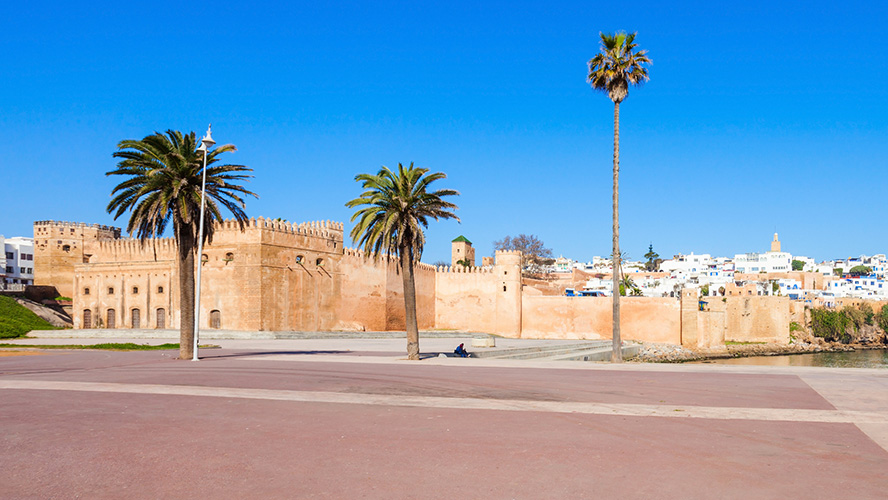
Today, its traditions and even surnames recall those of the original settlers of the Rabat Medina. For example, Ronda, Cortobi (Cordoba), Almodóvar, Malgui (Malaga) or Álvarez.
With the establishment of the French Protectorate during the first half of the 20th century, the Medina maintained its status and much of its urban planning, although some sections of the wall were demolished and the neighbourhood was rearranged with the layout of its straight main streets.
Things to see and do
The Rabat Medina is first and foremost a large souk. It is a place for trading, selling and buying all kinds of products. This is particularly noticeable in the Central Market, with its various sections: from handicrafts and decorative objects to all kinds of culinary ingredients (pay special attention to the sections on fish, spices and dressings).
You can also notice this in the Souk es Sebat (or the Gold Souk), which is very characteristic because of the vegetation cover among the buildings. This is the ideal place for buying handicrafts made from leather and other textiles, elaborately patterned tin objects, ceramics, costume jewellery, jewels, carpets and kaftans, among many other temptations.
Nevertheless, practically all the streets and small squares in the Rabat Medina are home to artisans’ workshops, food stalls or people selling agricultural or processed products such as cheese, bread or cakes and pastries on their doorstep.
Before entering the Medina itself, a good way to understand its uniqueness and importance is to walk around at least part of the outer perimeter, admiring the thick, high walls that make up the ramparts.
The main gates through which the Rabat Medina opens up to the rest of the city are: Bab El Had, from the 12th century, which is the most monumental and striking; Bab El Alou, from where you enter the great Islamic cemetery of the Martyrs; Bab El Rhaba, facing the Bou Regreg river; and Bab Chellah, opening onto Hassan II Avenue and the Quartier Hassan.
As for the buildings and places to visit inside the Rabat Medina, first and foremost is the Great Mosque of Rabat, dedicated to Jemaa El Kharrazin. It was built between the 13th and 14th centuries, although it has undergone numerous alterations over the centuries. The last one was in 1939, when the minaret, which is more than 33 metres high, was erected.
Of smaller proportions is the Moulay Slimane Mosque, built in the early 19th century on the initiative of that sultan. It occupies an area of about 1,000 square metres and, like the previous one, the interior can only be visited by practising Muslims.
Eating in the area
Within the Medina itself there are several small restaurants where you can enjoy the most recognisable and tasty traditional Moroccan cuisine. This is the case of the following:
Dar El Medina (3 Rue Benjelloul Souk Sebbat)
Although its prices are somewhat higher than those of the rest of the area, this is understandable thanks to its ambience and decoration and its service quality and dishes. Among them, the chicken pastelas are very popular, plus the tajines.
Ziryab Rabat (10 Impasse Ennajjar, Avenue des Consuls)
Traditional Moroccan and local cuisine with a touch of sophistication. Of course you pay for this but do not worry: the bill is never outrageous. In return you can enjoy the luxury of dining in an authentic palace, sometimes accompanied by the art of traditional musicians.
Dar Rbatia (6 Rue Farane Krachane)
Its owners sell it as one of Rabat’s most authentic restaurants. We might also add that its portions are more generous and substantial. The best thing to do is indulge in one of its six menus, which celebrate the most traditional Moroccan flavours.
Chez Hajja (7 Derb Cherjaoui, Rue Lalla Oumkanabech)
Pure Moroccan cuisine but somewhat cheaper than the restaurants mentioned above. All served with kindness by the women in charge, in a simple place where there are several vegan options, as appetising as they are filling.


























































